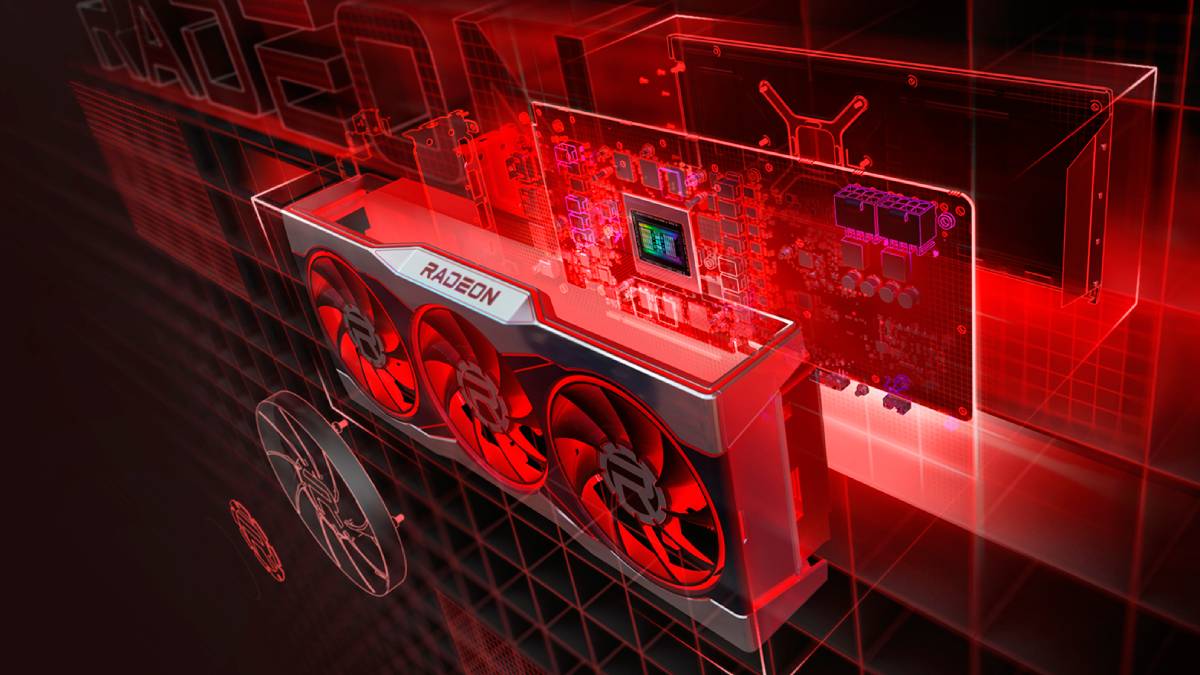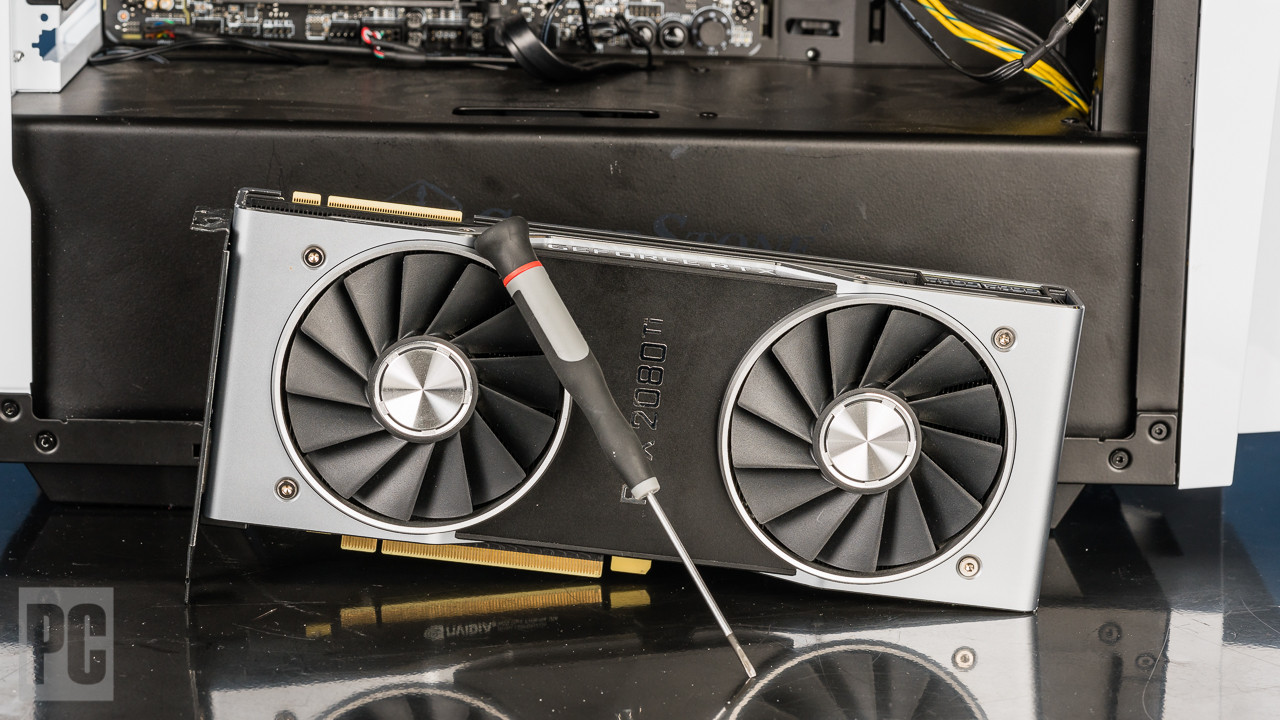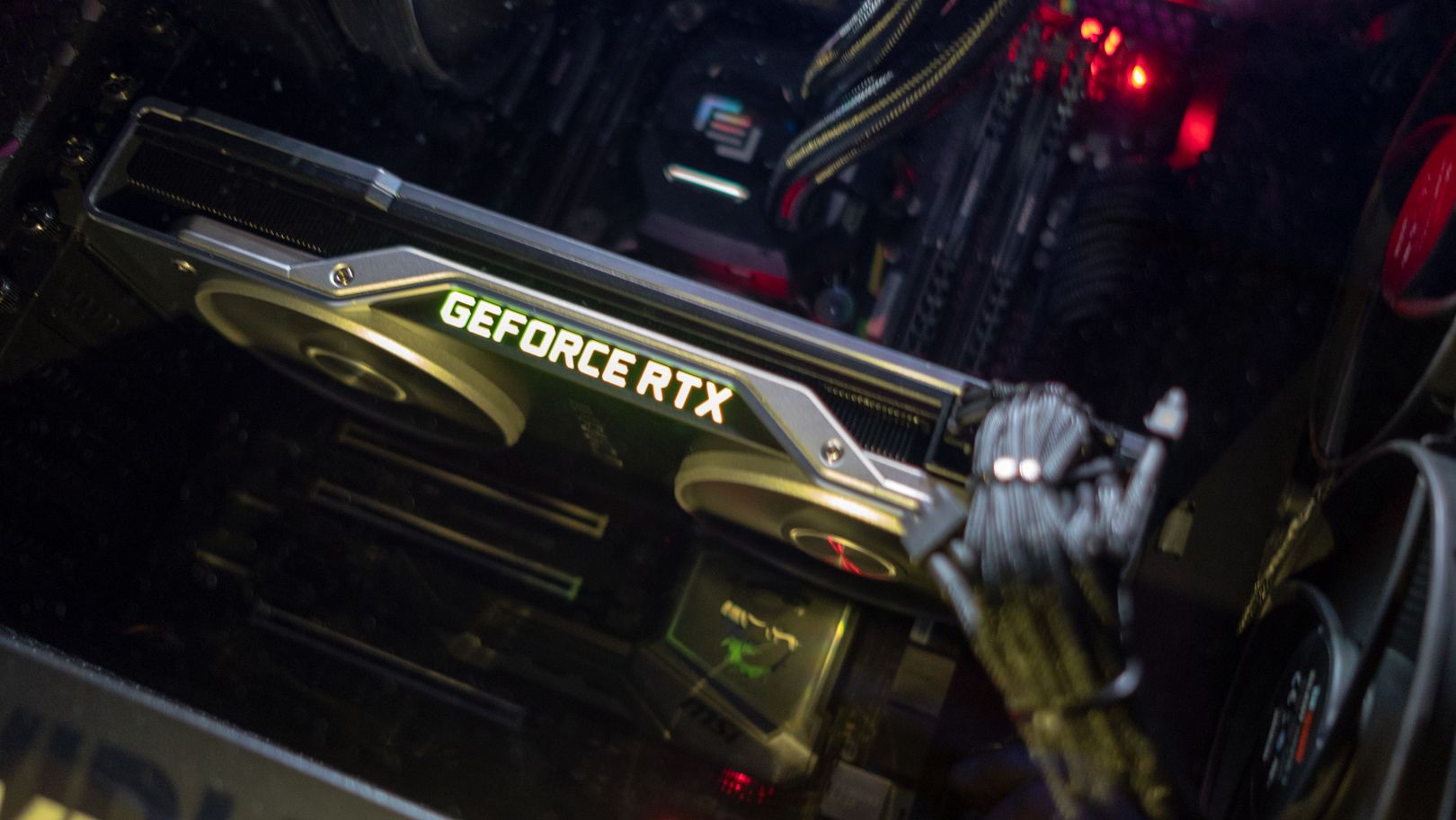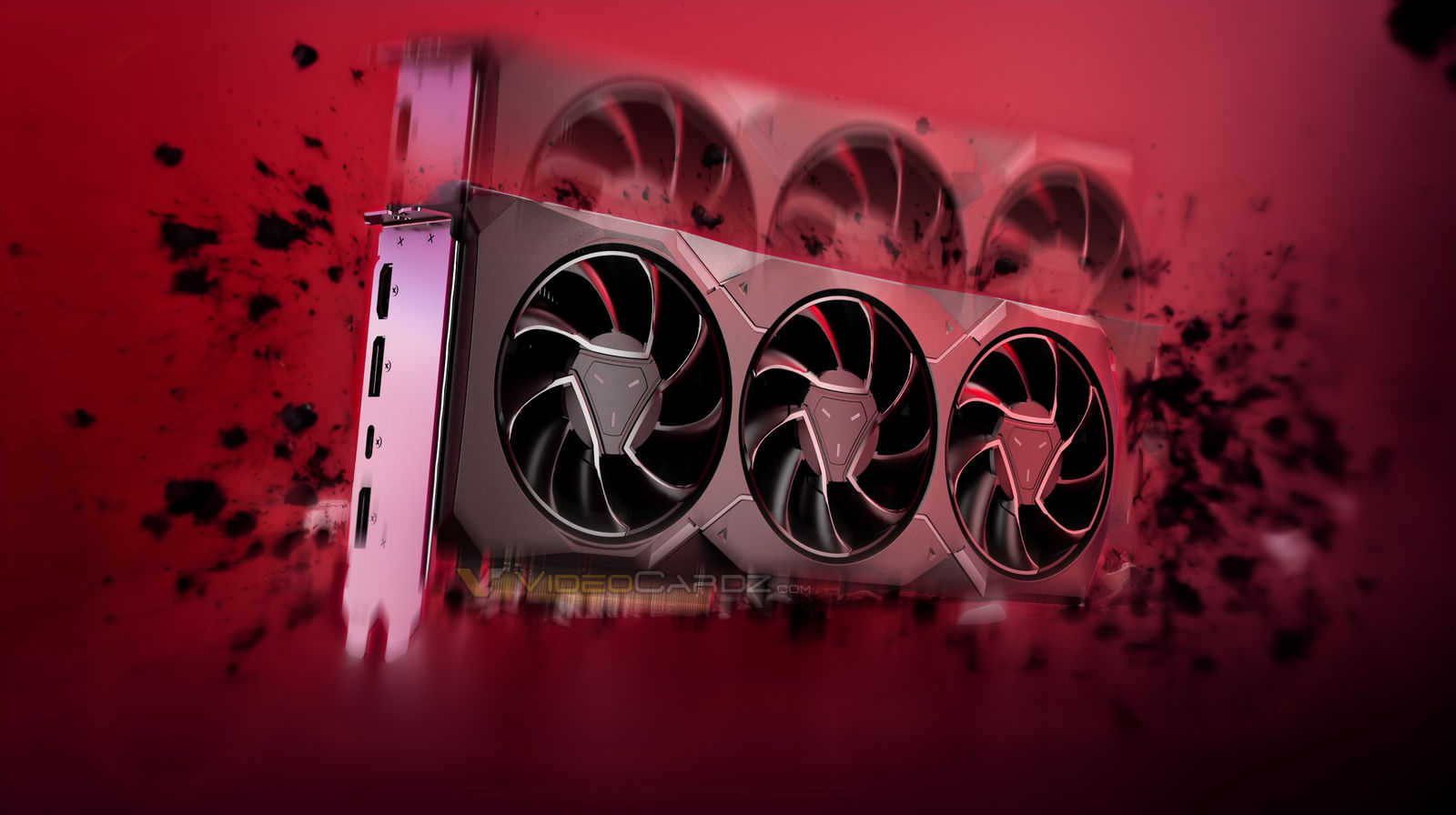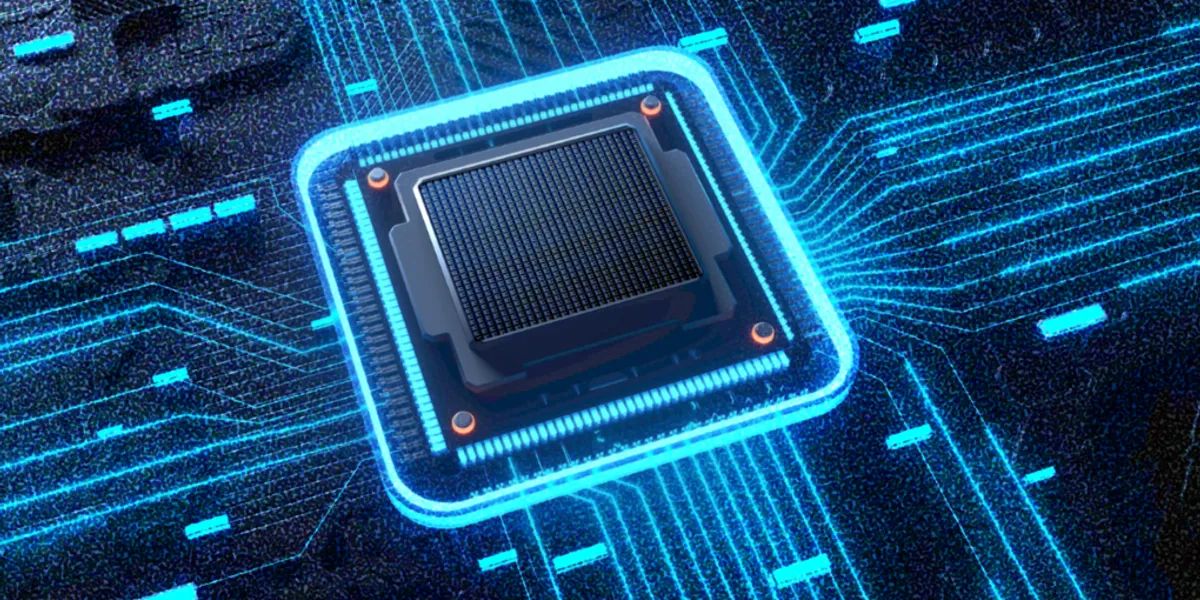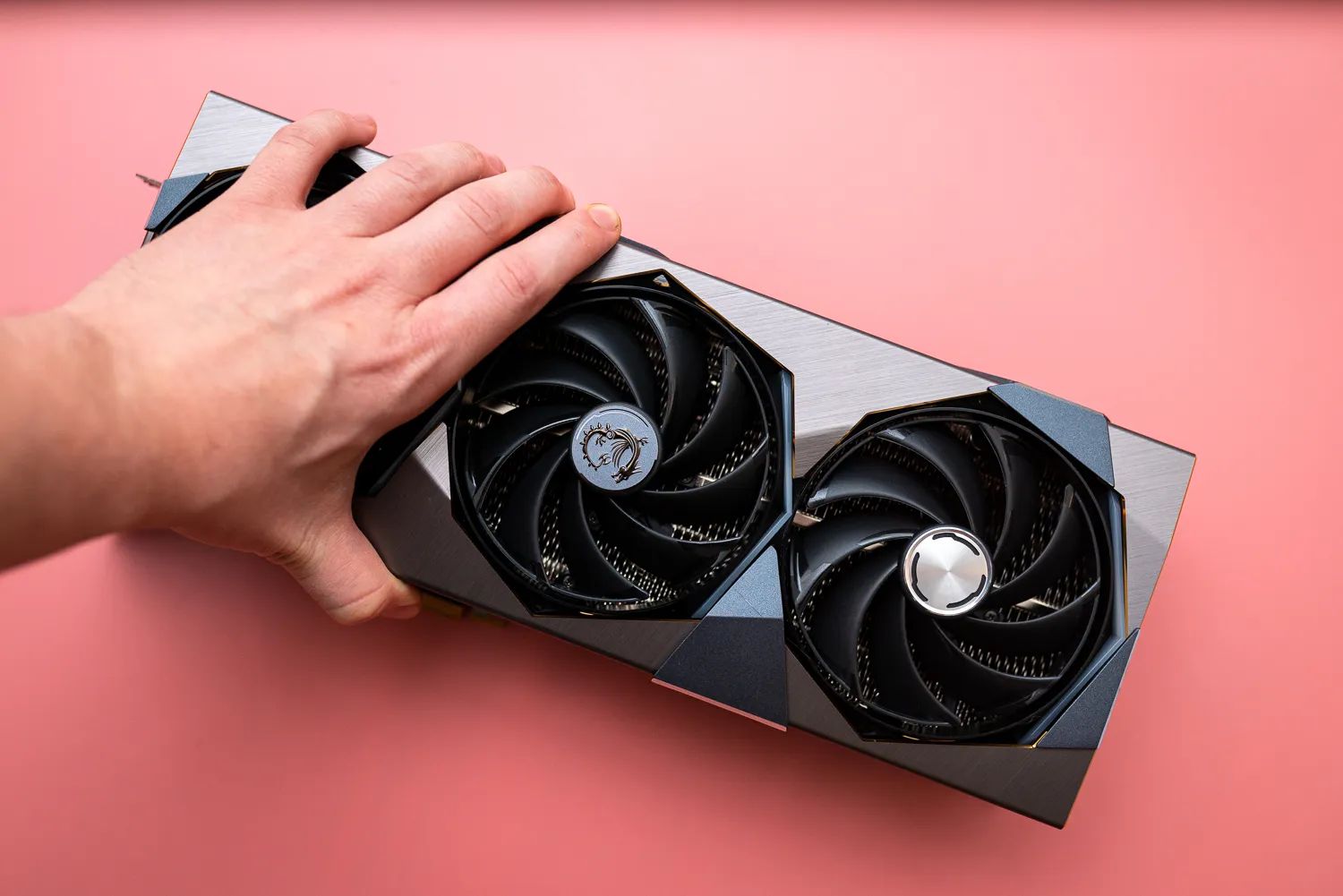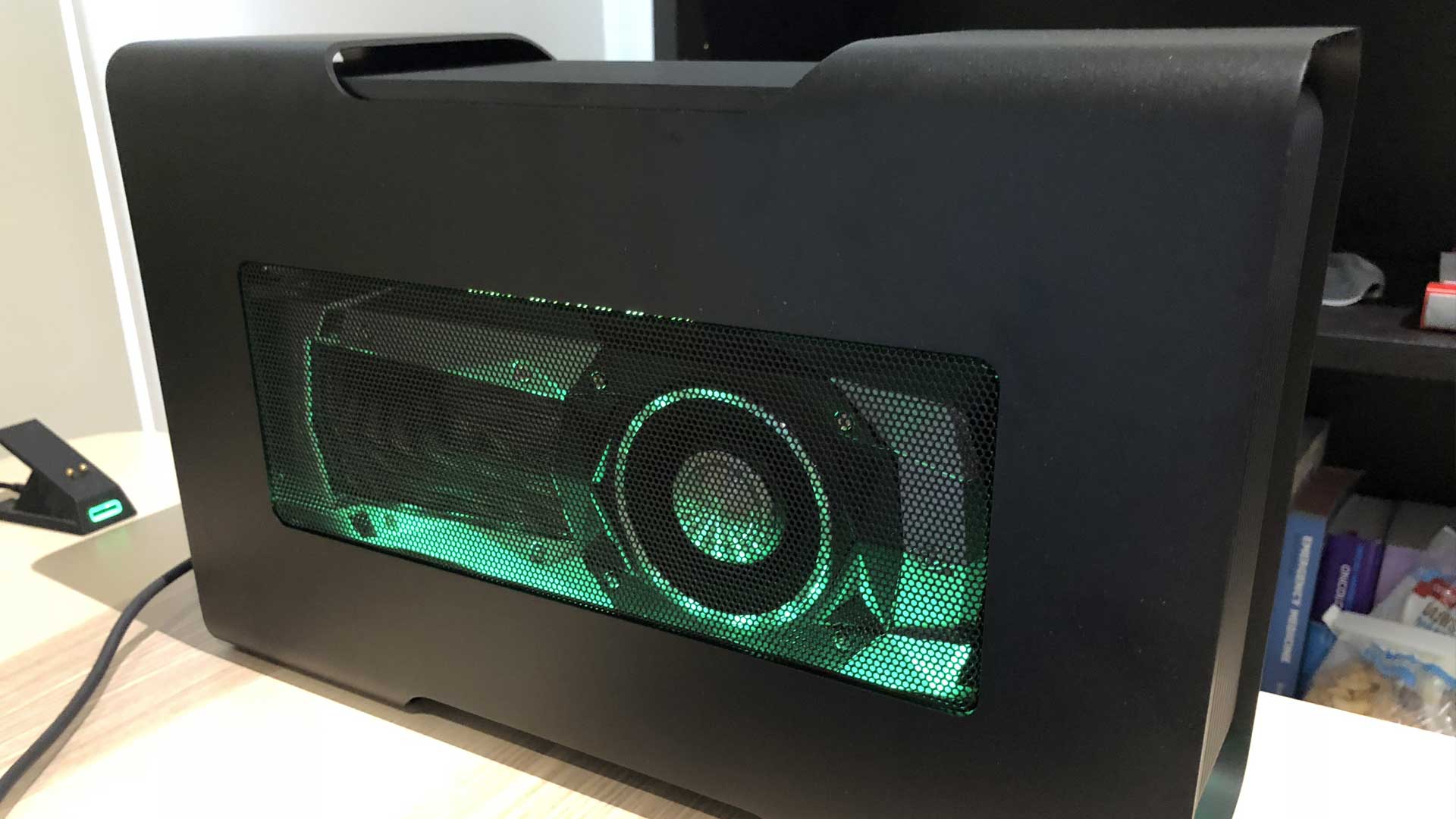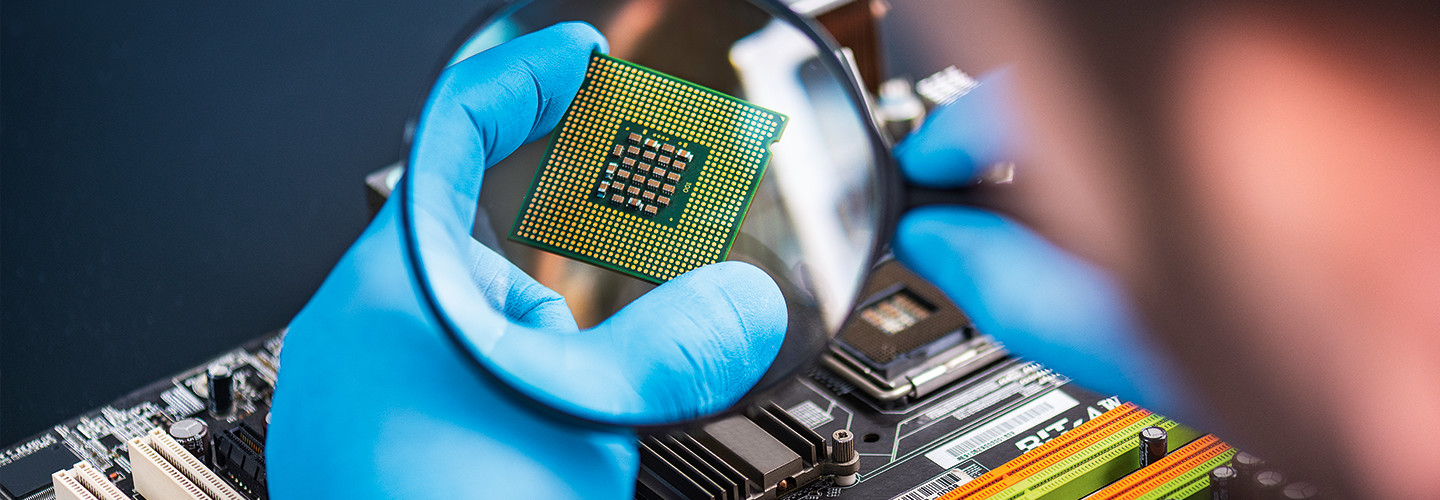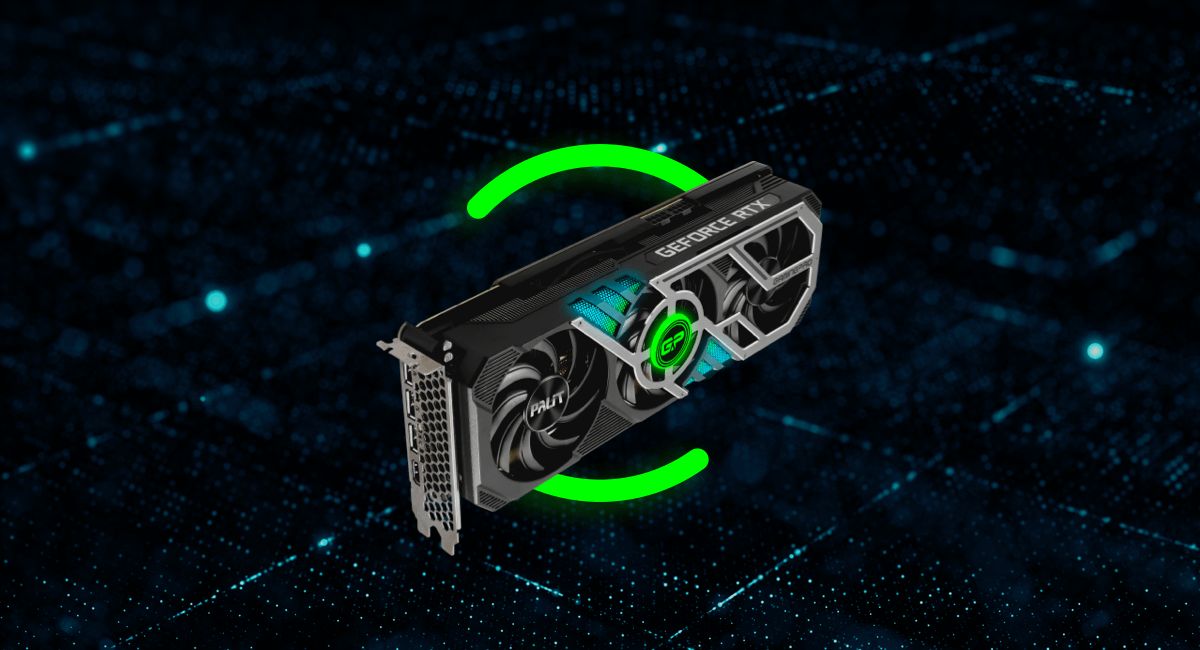Introduction
Power limiting is a crucial aspect of optimizing the performance and efficiency of your GPU (Graphics Processing Unit). Whether you are a gamer, a content creator, or a professional working with graphic-intensive applications, understanding how to power limit your GPU can help you unleash its full potential while managing power consumption.
When it comes to GPUs, power limiting refers to the process of setting a maximum power consumption limit for your graphics card. By imposing a power limit, you can control the amount of power drawn by your GPU, thereby balancing performance, power consumption, and heat generation.
Power limiting is especially important when your GPU is running at full load for extended periods, such as during intensive gaming sessions or when rendering high-resolution videos. By managing the power consumption, you can optimize the performance of your GPU while ensuring that it operates within safe temperature limits.
Nowadays, many GPUs come with built-in power limiting capabilities, allowing users to adjust the power limits according to their specific needs. Additionally, there are various software tools and methods available that enable users to modify the power limits of their GPUs, providing even more flexibility and control.
In this article, we will explore the concept of power limiting, its benefits, and different methods to power limit your GPU. We will also discuss the factors to consider before implementing power limiting, including the impact on gaming performance, system stability, and the precautions to follow to ensure the safety of your GPU.
So, whether you want to maximize the performance of your GPU or reduce power consumption for energy efficiency, read on to learn how to power limit your GPU effectively.
What is Power Limiting?
Power limiting, also known as power capping or power management, refers to the practice of setting a maximum power consumption limit for a GPU. It enables users to control the amount of power that their graphics card can draw, which in turn affects its performance, power consumption, and heat generation.
Typically, a higher power limit allows the GPU to operate at its maximum potential, delivering better performance in terms of frame rates, image quality, and overall graphics processing capabilities. On the other hand, lowering the power limit can help reduce power consumption and heat output, which may be desirable for reasons such as improving energy efficiency or managing system cooling.
Power limiting is especially beneficial in scenarios where the GPU is under constant high load, such as during gaming, content creation, or scientific computations. By managing the power consumption, users can prevent their GPUs from drawing excessive power, which could lead to thermal throttling, decreased performance, or even system instability.
To understand power limiting, it’s essential to consider the concept of thermal design power (TDP). TDP refers to the maximum amount of power that a graphics card is designed to consume under typical operation. However, in intensive tasks or overclocking scenarios, the power consumption of a GPU can exceed its TDP, leading to increased heat generation and potential stability issues.
By implementing power limiting, users can set a cap on the amount of power their GPU can consume, preventing it from exceeding safe limits and maintaining optimal operating temperatures. This feature is particularly useful when trying to achieve a balance between performance and power consumption, as it allows users to fine-tune their GPU’s power requirements based on their specific needs.
Power limiting can be performed through various methods, such as using software applications, modifying BIOS settings, or even employing hardware modifications. We will discuss these methods in more detail in the following sections.
In summary, power limiting is a crucial technique that allows users to manage the power consumption of their GPUs. It enables them to strike a balance between performance and power efficiency, ensuring optimal functioning while preventing overheating and stability issues.
Why Power Limit your GPU?
Power limiting your GPU offers several benefits that can greatly enhance your computing experience. Here are some reasons why you may want to consider power limiting your GPU:
- Energy Efficiency: By setting a power limit, you can reduce the power consumption of your GPU. This not only helps in reducing your electricity bills but also contributes to a greener environment by conserving energy.
- Temperature Control: Power limiting can help in managing the temperature of your GPU. By capping the power consumption, you can control the amount of heat generated, preventing your GPU from reaching high temperatures that may lead to thermal throttling or even damage over time.
- Noise Reduction: GPUs running at high power consumption levels tend to generate more heat, which often results in the cooling fans spinning at higher speeds, leading to increased noise levels. By power limiting your GPU, you can reduce the heat output and subsequently decrease the fan speeds, resulting in a quieter computing environment.
- Better Control over Power Consumption: Power limiting allows you to have fine-grained control over the power consumption of your GPU. This can be particularly useful if you have a limited power supply or if you want to allocate more power resources to other components in your system.
- Stability and Reliability: Running a GPU at its maximum power consumption for extended periods can put a lot of stress on the graphics card, potentially leading to stability issues and reduced lifespan. By implementing power limiting, you can ensure that your GPU operates within safe power limits, promoting stability and prolonging its overall durability.
- Overclocking Potential: Power limiting can also be advantageous for overclocking enthusiasts. By lowering the power limit, you can achieve better control over the power distribution in your GPU, allowing for potentially higher overclocking frequencies and more stable performance.
It’s important to note that power limiting may impact the overall performance of your GPU. While the specific effects may vary depending on the workload and the extent of power limitation, it’s essential to find the right balance between power consumption and performance to suit your specific needs.
Now that we’ve explored the benefits of power limiting your GPU, let’s dive into the different methods you can use to check the power limit of your GPU and implement power limiting.
How to Check Power Limit of your GPU
Before you can begin power limiting your GPU, it’s important to know the current power limit of your graphics card. Here are several methods you can use to check the power limit of your GPU:
- GPU Monitoring Software: Many popular GPU monitoring software, such as MSI Afterburner, GPU-Z, or HWiNFO, provide detailed information about your GPU, including the power limit. These programs display real-time data and allow you to monitor various GPU parameters, including power consumption and temperature.
- Graphics Card Manufacturer Software: Most GPU manufacturers also provide their own software for managing and monitoring your graphics card. These utilities, such as NVIDIA GeForce Experience or AMD Radeon Software, often include power limit information among the available GPU statistics.
- BIOS/UEFI Settings: Some GPUs allow you to check and modify the power limit through the BIOS or UEFI (Unified Extensible Firmware Interface) settings. You can access these settings by restarting your computer and entering the BIOS/UEFI setup during the boot process. Look for power-related options or GPU settings to find the power limit information.
- Command Line Tools: Another way to check the power limit of your GPU is by using command-line tools. For example, on Windows, you can open the Command Prompt and use the “nvidia-smi” command for NVIDIA GPUs or “rocm-smi” for AMD GPUs to get information about your GPU, including the power limit.
- Online Resources: If you are unable to access the power limit information through the methods mentioned above, you can also search for your specific GPU model online. Many GPU databases and technical websites provide detailed specifications, including the power limit, for different graphics cards.
By using one or a combination of these methods, you can determine the power limit of your GPU and proceed to implement power limiting techniques accordingly.
Now that you know how to check the power limit of your GPU, let’s explore the different methods and tools you can use to power limit your GPU effectively.
Methods to Power Limit your GPU
There are several methods and tools available to power limit your GPU. Let’s explore some of the most common ways to achieve this:
- Overclocking Software: Many overclocking software, such as MSI Afterburner or EVGA Precision X, allow you to adjust the power limit of your GPU. These tools provide a user-friendly interface that allows you to increase or decrease the power limit to achieve your desired power consumption and performance balance. Additionally, they often offer other features like voltage control and fan speed adjustment.
- Motherboard UEFI/BIOS: Some motherboards offer power limit settings that can affect the entire system, including the GPU. By accessing the UEFI/BIOS settings, you can modify the power limits for the PCIe slot, affecting the power delivery to the GPU. However, this method may not be available on all motherboards or may have limited options for power limiting.
- Third-Party Tools and Software: Apart from overclocking software, there are various third-party tools and software that specialize in power limiting graphics cards. These tools often provide advanced features like custom power curve adjustments, dynamic power limiting based on application usage, and more fine-grained control over power consumption. Examples include Nvidia Inspector and AMD Wattman.
- GPU Manufacturer Software: Graphics card manufacturers usually offer their own software utilities that allow users to manage and optimize their GPUs. These utilities often include power limiting options, allowing you to set a maximum power limit for your specific GPU model. Examples include Nvidia GeForce Experience and AMD Radeon Software.
- Editing Power Limit in Registry: Advanced users can modify the power limit of their GPUs by accessing the Windows Registry. By navigating to the correct registry key and adjusting the power limit values, you can manually set the desired power limit for your GPU. However, it’s crucial to proceed with caution when modifying the registry, as any incorrect changes can cause system instability.
- DIY Mods and Hardware Limiters: For those who are comfortable with hardware modifications, it is possible to physically limit the power consumption of a GPU using custom modifications. This can involve manipulating voltage regulators, adding resistors, or using hardware limiters to restrict the power draw of the graphics card. However, these methods require advanced technical knowledge and may void the warranty of your GPU.
When choosing a power limiting method, it’s important to consider the compatibility of the method with your GPU model, the level of control and customization desired, and the ease of implementation for your specific use case.
Now that you are familiar with the methods to power limit your GPU, it’s important to consider some factors before implementing power limits to ensure optimal performance and stability. Let’s explore these factors in the next section.
Overclocking Software
Overclocking software, such as MSI Afterburner or EVGA Precision X, is a popular choice for power limiting GPUs. These software tools not only allow you to overclock your GPU but also provide options to adjust the power limit. Here’s how you can use overclocking software to power limit your GPU:
Step 1: Download and install a suitable overclocking software for your GPU model. Popular options include MSI Afterburner, EVGA Precision X, and ASUS GPU Tweak.
Step 2: Launch the overclocking software and make sure it detects your GPU correctly.
Step 3: Navigate to the power limit or power target settings within the software. The location of this setting may vary depending on the software, but it is usually easily accessible from the main interface or through a dedicated tab.
Step 4: Adjust the power limit to your desired value. You can either increase or decrease the power limit based on your specific requirements. Increasing the power limit may allow for better performance at the expense of increased power consumption and heat output, while decreasing the power limit can help in reducing power consumption and heat generation.
Step 5: Apply the changes and test the stability of your GPU. It’s advisable to monitor the temperature and performance of your GPU under load after adjusting the power limit to ensure that it remains stable and within safe temperature ranges.
Overclocking software provides a user-friendly interface that allows you to monitor and adjust various parameters of your GPU. Along with power limiting, these tools often provide options for voltage control, fan speed adjustment, and monitoring of temperature and performance. They are especially useful for gamers and enthusiasts who want to fine-tune their GPU settings to achieve the best possible performance while managing power consumption.
It’s important to note that when using overclocking software, it’s crucial to proceed with caution. Adjusting the power limit beyond the recommended limits or without adequate cooling solutions can lead to instability, overheating, and potentially damage your GPU. It’s always advisable to gradually increase or decrease the power limit and test the stability of your system before making significant changes.
Now that you have learned about using overclocking software to power limit your GPU, let’s explore another method – adjusting the power limit through the motherboard’s UEFI/BIOS settings.
Motherboard UEFI/BIOS
The UEFI (Unified Extensible Firmware Interface) or BIOS (Basic Input/Output System) of your motherboard provides another method to power limit your GPU. While not all motherboards have this feature, some models allow you to adjust the power limit for the PCIe slot, which affects the power delivery to the GPU. Here’s how you can use the motherboard UEFI/BIOS settings to power limit your GPU:
Step 1: Restart your computer and enter the UEFI/BIOS setup. The process of accessing the UEFI/BIOS varies depending on the motherboard manufacturer. Typically, you need to press a specific key (e.g., Del, F2, F12) during the boot process to enter the UEFI/BIOS setup.
Step 2: Navigate through the UEFI/BIOS settings to find the power-related options or GPU settings. Look for settings such as “PCIe Power Limit,” “PEG Power Limit,” or similar terms.
Step 3: Adjust the power limit accordingly. Some motherboards offer a specific power limit value that you can select or adjust using a slider. In other cases, you may have the option to choose between different power profiles, such as “Auto,” “Normal,” or “Reduced Power.” Select the desired power limit or profile based on your requirements.
Step 4: Save the changes and exit the UEFI/BIOS setup. The motherboard will apply the new power limit settings on the next system startup.
It’s important to note that the available power limit options in UEFI/BIOS settings may vary depending on the motherboard model and manufacturer. Some motherboards provide limited power limit options, while others offer more granular control over power settings.
Using the motherboard UEFI/BIOS to power limit your GPU gives you system-level control over power delivery to the PCIe slot. While this method may not provide as fine-grained control as overclocking software or specialized GPU tools, it can still be effective in managing power consumption. Additionally, adjusting the power limit through the motherboard UEFI/BIOS settings can be a more stable and reliable option for power limiting as it affects the entire system and not just the GPU.
Now that you have learned about using the motherboard UEFI/BIOS settings to power limit your GPU, let’s explore another method – using third-party tools and software.
Third-Party Tools and Software
When it comes to power limiting your GPU, there are several third-party tools and software available that specialize in GPU management and optimization. These tools often provide advanced features and options for power limiting, allowing for more precise control over power consumption. Here’s how you can use third-party tools and software to power limit your GPU:
Step 1: Research and select a suitable third-party tool or software for power limiting your GPU. Some popular options include Nvidia Inspector, AMD Wattman, or GPU Tweak II.
Step 2: Download and install the chosen third-party tool/software onto your system. Make sure to download the latest version that is compatible with your GPU model and operating system.
Step 3: Launch the third-party tool/software and ensure that it recognizes and detects your GPU correctly. Most tools provide an interface or dashboard that displays essential information about your GPU, such as power consumption, clock speeds, and temperature.
Step 4: Locate the power limit settings within the tool/software. Depending on the specific program, this may be in the form of a slider, numeric input, or power limit curve. Adjust the power limit to your desired value, keeping in mind the balance between performance and power consumption.
Step 5: Apply the changes and monitor the performance and stability of your GPU. It’s essential to test the system under different workloads to ensure that the power limit adjustment does not adversely affect stability or cause overheating.
Third-party tools and software offer more advanced and customizable options for power limiting your GPU compared to the built-in utilities provided by GPU manufacturers. These tools often provide features such as fine-tuning power curves, creating custom profiles for different workloads, and even dynamic power limiting based on real-time usage.
Using third-party tools and software provides greater flexibility and control over power limiting, allowing you to optimize your GPU settings based on your specific needs. However, it’s essential to find a reliable and trusted tool/software from reputable sources to ensure compatibility and the security of your system.
Now that you have learned about using third-party tools and software to power limit your GPU, let’s explore another method – utilizing the GPU manufacturer’s software.
GPU Manufacturer Software
GPU manufacturers often provide their own software utilities for managing and optimizing their graphics cards. These software tools, such as Nvidia GeForce Experience or AMD Radeon Software, allow users to access various settings and features, including power limiting. Here’s how you can use GPU manufacturer software to power limit your GPU:
Step 1: Download and install the software provided by your GPU manufacturer. Examples include Nvidia GeForce Experience for Nvidia GPUs or AMD Radeon Software for AMD GPUs. Make sure to download the latest version that is compatible with your GPU model.
Step 2: Launch the GPU manufacturer software and ensure that it detects your GPU correctly. These software tools often provide a user-friendly interface with various options and settings related to your graphics card.
Step 3: Navigate through the software interface to find the power limit settings. The location and naming of this setting may vary depending on the specific software. Look for options such as “Power Limit” or “GPU Power Target.
Step 4: Adjust the power limit according to your needs. You can typically increase or decrease the power limit using a slider or by manually inputting values. Higher power limits allow for better performance but result in increased power consumption and heat output, while lower power limits prioritize power efficiency.
Step 5: Apply the changes and monitor the performance and stability of your GPU. It’s important to test different workloads and monitor the temperature to ensure that the power limit adjustment does not lead to overheating or system instability.
GPU manufacturer software provides a convenient and straightforward way to manage various aspects of your graphics card, including power limiting. These tools often offer additional features such as performance optimization, driver updates, and game-specific settings.
Using GPU manufacturer software ensures compatibility and optimization for your specific GPU model, as the software is designed and provided by the manufacturer themselves. This makes it a reliable and trusted option for power limiting your GPU.
Now that you have learned about using GPU manufacturer software to power limit your GPU, let’s explore another method – editing the power limit in the Windows Registry.
Editing Power Limit in Registry
For advanced users, editing the Windows Registry can be a method to adjust the power limit of their GPU. However, it’s important to note that modifying the registry can potentially lead to system instability if not done correctly. Proceed with caution and create a backup of your registry before making any changes. Here’s how you can edit the power limit in the Windows Registry:
Step 1: Open the Windows Registry Editor by pressing Windows key + R, typing “regedit” in the Run dialog, and pressing Enter.
Step 2: Navigate to the HKEY_LOCAL_MACHINE\SYSTEM\CurrentControlSet\Control\Video key in the left pane. You may need to look for the entry that corresponds to your GPU. To determine the correct entry, you can go to the Device Manager, right-click on your GPU, select Properties, and go to the Details tab. Look for the “Hardware Ids” property and note down the value.
Step 3: Expand the Video key and locate the subkey that matches the Hardware Ids value you noted in the previous step.
Step 4: Look for a DWORD value named “PowerLimit” or “PowerLimitOverride” in the right pane. If the value does not exist, you may need to create it. Right-click in the right pane, select New > DWORD (32-bit) Value, and name it “PowerLimit” or “PowerLimitOverride”.
Step 5: Double-click on the PowerLimit or PowerLimitOverride value and set the value data to the desired power limit. The unit of measurement may vary depending on the GPU model and manufacturer, so refer to the documentation or online resources for the correct unit of measurement.
Step 6: Exit the Registry Editor and restart your computer for the changes to take effect.
Editing the power limit in the Windows Registry provides direct control over the power limit setting of your GPU. However, it’s crucial to proceed with caution and ensure that you have the correct registry key and value, as modifying the wrong entry can cause system instability.
It’s also important to note that not all GPUs have a PowerLimit or PowerLimitOverride value in the registry, and some manufacturers may use different methods to control the power limit of their graphics cards.
As with any registry modifications, it’s always recommended to create a backup of your registry before making any changes. If you are not confident in making registry edits, it’s best to seek the assistance of a knowledgeable professional.
Now that you have learned about editing the power limit in the Windows Registry, let’s explore another method – DIY mods and hardware limiters.
DIY Mods and Hardware Limiters
For experienced users who are comfortable with hardware modifications, DIY mods and hardware limiters provide an alternative method to power limit your GPU. These modifications involve physical changes to restrict the power consumption of the graphics card. It’s important to note that performing DIY mods may void the warranty of your GPU, and it should only be done if you have the necessary knowledge and expertise. Here are a few examples of DIY mods and hardware limiters:
Undervolting: Undervolting involves reducing the voltage supplied to your GPU, which can result in lower power consumption and reduced heat output. This can be achieved by using software tools like MSI Afterburner or by manually modifying voltage settings through BIOS or UEFI.
Resistance Mod: A resistance mod involves adding resistors to specific power lines on the GPU to restrict the current flow and thus lower the power consumption. This requires soldering skills and careful consideration of the resistance values used.
Limiting Software: Some users employ software or scripts that restrict the power consumption of the GPU by manipulating driver settings or using specific power management profiles. However, these methods may not always be precise or reliable.
External Hardware Limiters: External hardware limiters, such as power limiters or power switches, can be used to physically limit the amount of power that the GPU can draw. These limiters are often connected in-line with the GPU’s power cables to control the power supply directly.
It’s crucial to approach DIY mods and hardware limiters with caution, as improper modifications can lead to permanent damage to your GPU. It is recommended to thoroughly research and understand the potential risks and benefits, as well as the specific requirements and restrictions of your GPU model, before attempting any hardware modifications.
Performing DIY mods and using hardware limiters should only be done by advanced users who possess the necessary skills and knowledge. If you are unsure or uncomfortable with these modifications, it is best to seek the assistance of an experienced professional.
Now that you have learned about DIY mods and hardware limiters as a method to power limit your GPU, let’s move on to discussing the factors to consider before implementing power limits.
Factors to Consider before Power Limiting
Before implementing power limits on your GPU, there are several important factors that you should consider. These factors can help you make informed decisions and ensure optimal performance and stability. Here are four key factors to take into account:
1. GPU Temperature and Cooling: Power limiting can affect the temperature of your GPU. Lowering the power limit can reduce heat generation and help maintain your GPU within safe temperature limits. However, overly aggressive power limiting may result in inadequate cooling, leading to thermal throttling or reduced performance. Consider the cooling capacity of your system and ensure sufficient airflow or cooling solutions to prevent overheating.
2. Performance vs. Power Limit Tradeoff: Adjusting the power limit will have an impact on the performance of your GPU. Higher power limits generally provide better performance, while lower power limits prioritize power efficiency. It’s important to find the right balance that meets your performance requirements while managing power consumption effectively. Experiment with different power limits and observe the impact on performance to make an informed decision.
3. Impact on Gaming and Rendering: Power limiting can affect the performance and stability of your GPU during gaming or rendering tasks. While power limits enable improved power efficiency, excessively limiting the power may result in lower frame rates, reduced image quality, or even crashes. Consider the specific applications or games you use and how they interact with power limits. Test different power limits to ensure compatibility and stability in your desired usage scenarios.
4. Stability and System Reliability: When implementing power limits, stability and reliability should be key considerations. GPU instability can result in system crashes, data loss, or even hardware damage. Ensure that your system remains stable under different workloads and temperature conditions after applying power limits. Monitor the performance and stability of your GPU and consider gradually adjusting the power limits to determine the optimal settings for your system.
By carefully considering these factors, you can make informed decisions when power limiting your GPU. It allows you to balance performance, power consumption, temperature, and stability effectively. Remember that finding the right balance may require experimentation and fine-tuning based on your specific requirements and system configuration.
Now that you understand the factors to consider, let’s move on to discussing precautions and safety measures to follow when power limiting your GPU.
GPU Temperature and Cooling
When power limiting your GPU, it is crucial to pay attention to the GPU temperature and ensure adequate cooling. Power limiting can have a direct impact on the heat generated by the GPU, and insufficient cooling can lead to overheating and potential performance issues. Here are some important considerations regarding GPU temperature and cooling:
Understanding GPU Temperature: The temperature of a GPU is a critical factor in determining its overall performance and longevity. As power is consumed and converted into output, heat is generated. When the GPU temperature rises above certain limits, it can lead to thermal throttling, reduced performance, or even system instability.
Monitoring GPU Temperature: To ensure optimal GPU performance and prevent overheating, it is essential to monitor the GPU temperature. Many software tools, including GPU monitoring applications like MSI Afterburner or HWiNFO, provide real-time temperature readings. Monitoring the GPU temperature while adjusting the power limit can help you assess the impact on temperature and make informed decisions.
Ensuring Proper Cooling: Adequate cooling is crucial for maintaining the GPU temperature within safe ranges. Ensure that your system has sufficient airflow with properly positioned intake and exhaust fans. Consider additional cooling options such as aftermarket coolers, liquid cooling, or improved case ventilation if necessary. Maintaining clean and dust-free components also helps optimize cooling efficiency.
Heat Sink and Thermal Paste: The heat sink and thermal paste play significant roles in heat dissipation. A properly installed heat sink, with good contact between the GPU and the heat sink, facilitates efficient heat transfer. Applying high-quality thermal paste helps improve thermal conductivity and ensures optimal heat dissipation. If you are experiencing persistent high temperatures, consider reapplying thermal paste or upgrading the heat sink.
GPU Fan Control: GPU fans are designed to cool the graphics card by dissipating heat. Many GPU utilities provide fan control options, allowing you to adjust the fan speed based on temperature or set custom fan curves. Increasing the fan speed can help improve cooling performance but may result in higher noise levels. Strike a balance between noise and cooling effectiveness based on your preferences and system requirements.
Safe Temperature Range: Different GPUs have varying safe temperature ranges, so it’s important to consult the manufacturer’s documentation or website for specific temperature guidelines. As a general rule of thumb, it’s advisable to keep the GPU temperature below 85-90 degrees Celsius during prolonged usage to ensure optimal performance and longevity.
Testing and Stability: After making changes to the power limit or implementing cooling solutions, it’s crucial to test the stability of your GPU under various workloads and monitor the temperature. Run stress tests or use benchmarking software to assess the GPU’s stability and confirm that the cooling solution effectively manages the temperature.
By paying close attention to GPU temperature and implementing proper cooling techniques, you can ensure that your GPU operates at optimal temperatures and performance levels while power limiting. Keeping your GPU cool not only safeguards its longevity but also maintains stable performance and prevents issues related to overheating.
Now, let’s move on to discussing the performance versus power limit tradeoff, another important factor to consider when power limiting your GPU.
Performance vs Power Limit Tradeoff
When power limiting your GPU, it’s important to consider the tradeoff between performance and power consumption. Adjusting the power limit directly impacts the GPU’s clock speed, voltage, and overall power consumption, which in turn affects its performance. Here are some key points to consider when navigating the performance versus power limit tradeoff:
Performance Impact: Increasing the power limit allows the GPU to operate at higher clock speeds, delivering better performance in terms of frame rates and overall graphics processing capabilities. Conversely, lowering the power limit reduces clock speeds, potentially reducing performance to some extent. It’s important to find the right balance that meets your performance requirements.
Power Consumption: Higher power limits result in increased power consumption, which translates to higher electricity usage and heat generation. Alternatively, lowering the power limit effectively reduces power consumption, making it a favorable choice for users seeking power efficiency or working within limited power supplies.
Clock Speed and Voltage Relationship: GPU performance is closely tied to clock speed and voltage. Increasing the power limit allows the GPU to run at higher clock speeds, which generally results in better performance. However, higher voltages are often required to achieve those higher clock speeds. Increasing voltage can significantly increase power consumption and heat output.
Stability and Thermal Throttling: It’s crucial to ensure that the GPU remains stable under different workloads and temperature conditions after applying power limits. Overly aggressive power limits can lead to instability, crashes, or thermal throttling. Thermal throttling occurs when the GPU reaches its temperature limit and reduces its clock speed to prevent overheating. Finding the right balance between power limit and temperature ensures stable performance without thermal issues.
Experimentation and Optimization: The impact of power limiting on performance varies depending on the workload, GPU architecture, and specific applications or games. It’s essential to experiment with different power limit settings and benchmark the performance in applications or games that you frequently use. This allows you to find the optimal power limit that delivers a balance between acceptable performance and power consumption.
Fine-tuning and Customization: Some advanced tools or BIOS settings may allow for more granular control over power limits. For example, custom power limit curves can be created to achieve a specific power-performance balance at different load levels. Fine-tuning power limits based on your specific usage scenarios can yield even better power efficiency and performance optimization.
Striking the right balance between performance and power limits is a delicate process that requires consideration of individual requirements, applications, and preferences. Careful testing, monitoring, and optimization can help you achieve the best tradeoff to meet your specific needs and ensure an optimal balance between performance and power consumption.
Now that you’ve learned about the performance versus power limit tradeoff, let’s explore the impact of power limiting on gaming and rendering tasks.
Impact on Gaming and Rendering
Power limiting your GPU can have an impact on gaming and rendering tasks, as it directly affects the performance and power consumption of the graphics card. Here are some key points to consider regarding the impact of power limiting on gaming and rendering:
Frame Rates and Image Quality: Adjusting the power limit can impact the frame rates and image quality in gaming. Higher power limits generally result in better performance, allowing for smoother gameplay and higher frame rates. Lowering the power limit can lead to reduced frame rates and potentially compromise the visual quality of games. It’s important to strike a balance based on your desired gaming experience.
Stability and Compatibility: Power limiting can affect the stability and compatibility of games and rendering software. Excessively low power limits can cause instability, crashes, or artifacts during gameplay or rendering, particularly in demanding applications. It’s essential to find a power limit that maintains system stability and compatibility with the software and games you use.
Application-specific Profiles: Some GPU management software allows for customizable power profiles specific to certain applications or games. This feature enables you to set different power limits based on the specific requirements of each application. Optimizing power limits for individual software can result in a better performance-power balance tailored to your needs.
Overclocking and Power Limiting: Power limiting can interact with overclocking efforts. Overclocking increases the clock speeds and voltage of the GPU to achieve higher performance, which often comes with increased power consumption. Power limiting can help manage power consumption and heat generated when overclocking, allowing stability and control over performance levels. Finding the balance between power limits and overclocking is crucial to attain the desired performance while maintaining stability.
Rendering Times: Power limiting can influence rendering times for graphics-intensive tasks. When power limits are decreased, rendering times may increase due to reduced performance capabilities. On the other hand, higher power limits can result in faster rendering times at the expense of increased power consumption and heat generation. It’s essential to consider the tradeoff between efficiency and speed based on your specific rendering requirements and deadlines.
Testing and Optimization: Testing different power limit settings in various games and rendering scenarios is necessary to find the optimal balance between performance, stability, and power consumption. Benchmarking software can help assess the impact of power limiting on game performance and rendering times. Experimentation and optimization are key to maximizing the potential of your GPU within your desired power limits.
Understanding the impact of power limiting on gaming and rendering allows you to make informed decisions about the power limits you set for your GPU. Striking the right balance between power consumption, performance, stability, and desired visual quality is crucial in achieving an optimized and enjoyable gaming or rendering experience.
Now that you have a clear understanding of the impact of power limiting on gaming and rendering, let’s move on to discussing stability and system reliability considerations when implementing power limits.
Stability and System Reliability
When implementing power limits on your GPU, ensuring stability and system reliability is of utmost importance. Power limiting can impact the overall stability and performance of your system, so it’s essential to consider the following factors to maintain a stable and reliable computing environment:
Power Limit Stability: Power limits that are too aggressive may lead to instability, crashes, or system freezes. It’s crucial to find a balance where the GPU operates within safe power limits without compromising system stability. Gradually adjust the power limits and monitor system performance and stability to find the optimal setting for your GPU.
Stress Testing and Benchmarking: Conducting stress tests and benchmarking your system after applying power limits is crucial. Stress tests, such as FurMark or Prime95, push your GPU to its limits to identify any instability or overheating issues. Benchmarking software, like 3DMark or Heaven Benchmark, can help assess the impact of power limits on system performance and stability.
Temperature Monitoring: Monitoring the GPU temperature is vital to prevent overheating and ensure system reliability. Excessive heat generated by power limits that are too high can lead to thermal throttling, decreased performance, or potential hardware damage. Regularly monitor the GPU temperature using software utilities to ensure it remains within safe operating limits.
Frequent System Maintenance: Regular system maintenance, such as cleaning out dust from fans and heat sinks, is essential for optimal cooling and heat dissipation. Over time, dust accumulation can hinder cooling performance, leading to increased temperatures and decreased system stability. Keep your system clean to maintain its reliability and longevity.
System Backup and Recovery: Before making any significant changes to power limits or other GPU settings, it’s advisable to create a system backup or restore point. In the event of instability or unexpected issues, you can revert to a known good state to avoid data loss and minimize downtime. Regular data backups are also essential for protecting important files.
GPU Warranty Considerations: Keep in mind that modifying power limits may void the warranty of your GPU. Check the warranty terms and conditions provided by the manufacturer to understand the potential impact on warranty coverage. Be cautious when making changes to your GPU’s power limits if warranty preservation is a concern.
Testing and Stability Validation: Thoroughly test the stability of your system after applying power limits. Run resource-intensive applications and games for extended periods to ensure stability and compatibility. Perform stability validation tests to confirm that the power limits set for your GPU do not adversely affect its overall performance, stability, or safety.
By considering these factors and taking appropriate measures, you can ensure stability and reliability when implementing power limits on your GPU. It’s important to treat power limiting as an iterative process, gradually adjusting settings and monitoring performance to find the optimal balance between power consumption, performance, and stability.
Now that you understand the importance of stability and system reliability in power limiting, let’s discuss precautions and safety measures to follow when implementing power limits on your GPU.
Precautions and Safety Measures
Implementing power limits on your GPU requires careful attention and adherence to several precautions and safety measures. By following these guidelines, you can minimize the risk of damaging your hardware and ensure a safe and successful power limiting experience:
1. Read Documentation: Familiarize yourself with the documentation provided by your GPU manufacturer. Understand the recommended power limits, specifications, and any specific instructions or restrictions related to power limiting for your particular GPU model.
2. Gradual Adjustments: When adjusting power limits, make changes gradually. Incrementally increase or decrease the power limit, testing the stability and temperature of your GPU at each step. This helps you find the optimal power limit without pushing your hardware beyond safe limits all at once.
3. Monitor Temperature: Keep a close eye on the temperature of your GPU. Use monitoring software to track temperature levels during different workloads. If temperatures exceed safe limits, adjust the power limit to reduce heat generation or consider improving your system’s cooling capabilities.
4. Use Reliable Software: Utilize reputable GPU management software or official manufacturer tools when adjusting power limits. These software programs are designed to work specifically with your GPU model, ensuring compatibility and minimizing the risks associated with untested or less reliable third-party tools.
5. Maintain Adequate Cooling: Ensure your system has sufficient cooling to dissipate the heat generated by the GPU. Clean dust from fans and heat sinks regularly to maintain optimal airflow. Consider additional cooling solutions, such as aftermarket coolers or liquid cooling, if necessary to manage temperatures effectively.
6. Backup Data: Before making any significant changes to power limits or other GPU settings, back up your important data. This precautionary measure protects your files in case of unexpected system issues or instability that may arise during the power limiting process.
7. Avoid Excessive Overclocking: While power limiting and overclocking can work together, it’s important to strike the right balance. Excessive voltage increases or clock speed boosts can lead to instability, heat buildup, and potential hardware damage. Always proceed cautiously when overclocking and monitor stability and temperature closely.
8. Warranty Considerations: Be aware that modifying power limits may void your GPU’s warranty. Review the warranty terms and conditions provided by the manufacturer to understand the potential impact on warranty coverage. Consider the risks of voiding your warranty before making any modifications to your GPU.
9. Seek Professional Assistance: If you’re unsure or uncomfortable with adjusting power limits yourself, consider seeking help from a professional or someone with experience in GPU customization. They can assist in setting appropriate power limits, ensuring system stability, and minimizing potential risks.
Adhering to these precautions and safety measures when power limiting your GPU helps mitigate the risks associated with hardware modifications and ensures a safe and reliable computing experience. Always prioritize the health and longevity of your GPU while seeking the optimal balance between performance and power consumption.
Now that you understand the precautions and safety measures, let’s conclude our exploration of power limiting your GPU.
Conclusion
Power limiting your GPU is a valuable technique that allows you to optimize performance, manage power consumption, and maintain system stability. By adjusting the power limits of your graphics card, you can strike a balance between performance, power efficiency, and temperature control.
We explored various methods to power limit your GPU, including overclocking software, motherboard UEFI/BIOS settings, third-party tools and software, editing the power limit in the Windows Registry, and even DIY mods and hardware limiters. Each method offers different levels of control and customization, allowing you to tailor the power limits to your specific needs.
Before implementing power limits, it’s important to consider crucial factors such as GPU temperature and cooling, the performance versus power limit tradeoff, the impact on gaming and rendering, and ensuring system stability and reliability. By carefully considering these factors and following precautions and safety measures, you can power limit your GPU effectively and safely.
Remember to monitor the temperature of your GPU, maintain adequate cooling, and perform stress tests and system maintenance regularly. Additionally, ensure you create backups of your data and be aware of any warranty implications when modifying power limits.
Power limiting provides you with the flexibility to optimize your GPU’s performance while managing power consumption. By finding the right balance, you can achieve optimal system performance, prolong the lifespan of your GPU, and create a more efficient and reliable computing environment.
As you embark on your power limiting journey, always remember to proceed with caution, experiment, and fine-tune your settings to suit your specific requirements. By doing so, you can unlock the full potential of your GPU while maintaining stability and efficiency.







